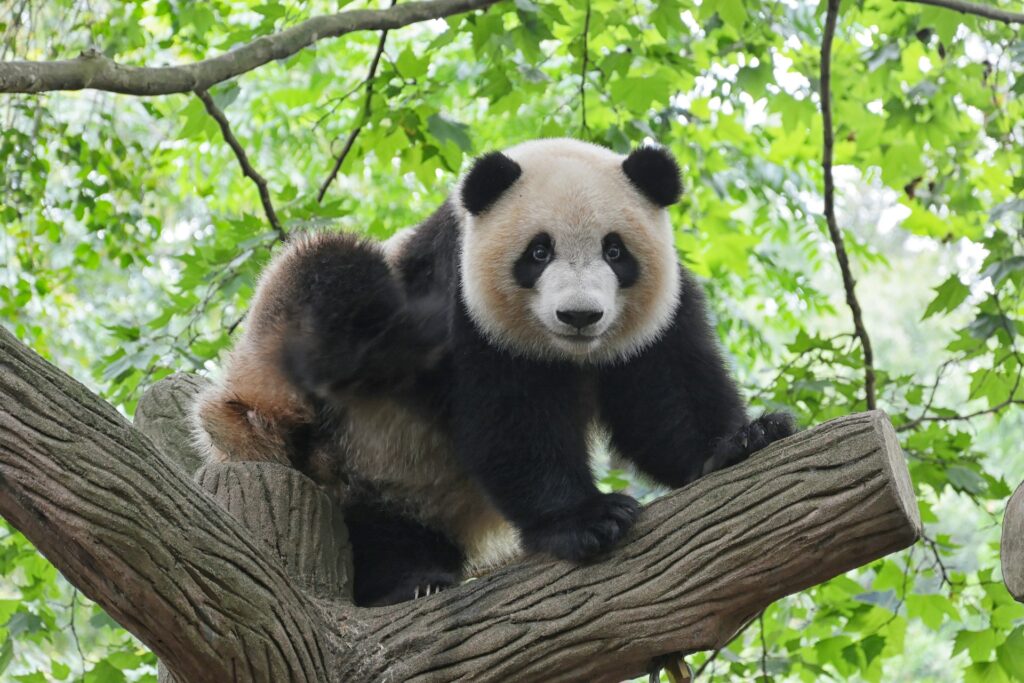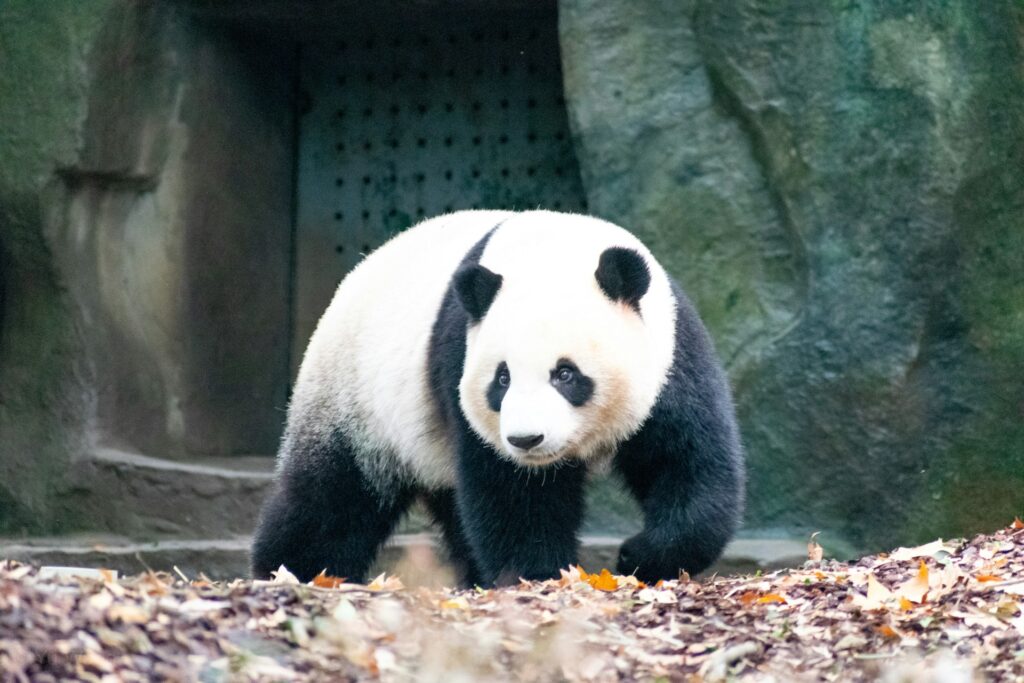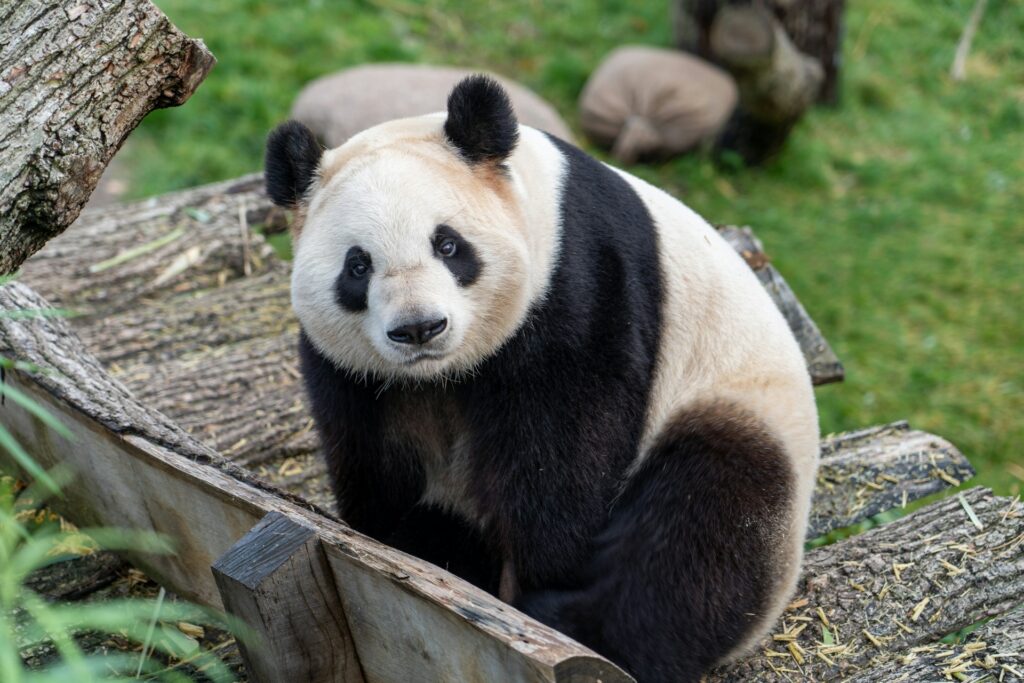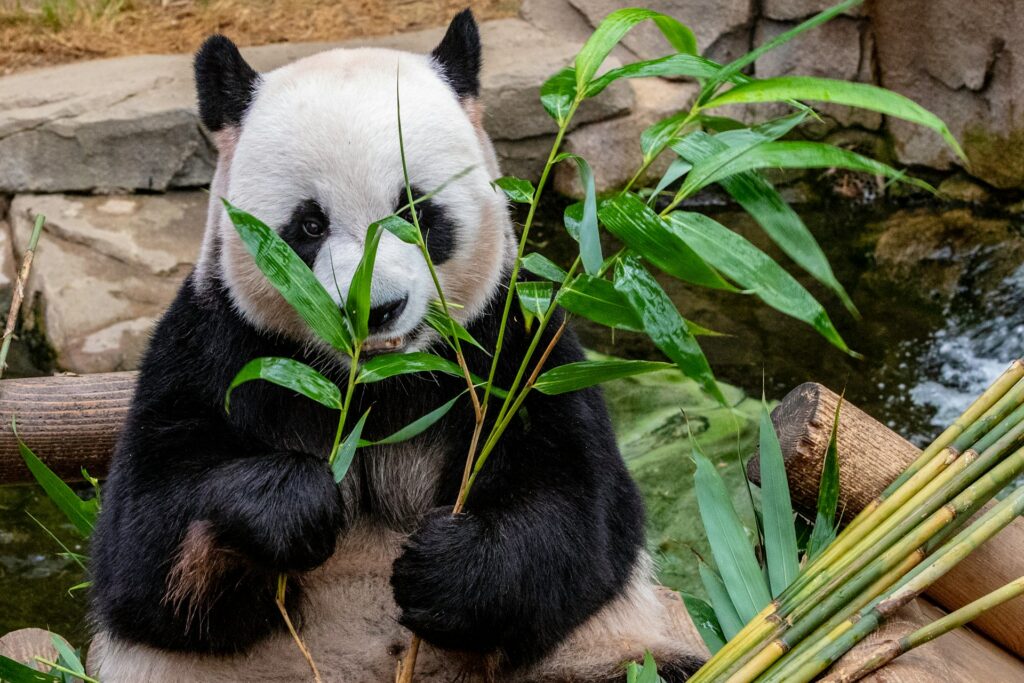Few animals have captured the public imagination quite like the giant panda.

With their expressive eyes, clumsy charm, and distinctive black-and-white fur, pandas have become global icons for conservation. Once symbolic of the urgent fight against extinction, pandas have seen their fortunes improve over the last few decades. However, despite this progress, important questions remain: are pandas truly out of danger, or is their future still precarious?
The truth is more complicated than most headlines suggest. While pandas are no longer on the brink, their survival is still shaped by complex environmental, political, and scientific factors, and their story serves as a case study in both the strengths and limitations of modern conservation.
A brief history of a species on the brink

Native to the mist-shrouded bamboo forests of central China, the giant panda has always had a limited range and specialised diet. These ecological quirks have made them particularly vulnerable to environmental change. By the 1980s, decades of habitat destruction and poaching had driven their numbers to dangerously low levels. Wild populations were estimated at fewer than 1,000 individuals, sparking global concern. Conservationists sounded the alarm, and the panda became one of the earliest international symbols of wildlife protection.
The response from China was swift and surprisingly comprehensive.

Over the following decades, the government established more than 60 panda reserves, expanded anti-poaching laws, and heavily restricted logging in panda habitats. This effort was bolstered by large-scale reforestation campaigns and the creation of ecological redline policies that limit development in sensitive areas.
Captive breeding programmes, though controversial in the early days, began to show promise. Techniques were refined, genetic diversity was carefully managed, and infant survival rates improved dramatically. By 2016, panda numbers had risen to just over 1,800 in the wild, and the International Union for Conservation of Nature (IUCN) officially reclassified the species from “endangered” to “vulnerable.” This was hailed as a milestone for conservation. The World Wildlife Fund (WWF), which uses the panda as its emblem, pointed to this shift as proof that long-term, well-funded conservation can work.
So, are pandas safe now?

Not exactly. While progress has been real and meaningful, many scientists and conservationists urge caution. The IUCN’s reclassification was not a signal to reduce efforts—it was a call to remain vigilant.
One of the biggest threats pandas face today is habitat fragmentation. Urban expansion, road construction, and the spread of agriculture continue to break up the bamboo forests pandas rely on. Fragmented habitats can isolate populations, making it harder for pandas to find mates, migrate seasonally, or adapt to environmental changes. The IUCN specifically notes that this fragmentation may eventually undermine the gains made in population recovery if not addressed properly.
Compounding the issue is climate change.

Studies conducted by the Chinese Academy of Sciences have warned that rising temperatures could cause a dramatic decline in bamboo forests within panda ranges, potentially reducing available habitat by over 35% by the end of the century. Since pandas rely almost exclusively on bamboo for their diet, this presents a potentially devastating scenario. They’re dietary specialists to an extreme degree, which means they have limited capacity to adapt if bamboo becomes scarce in key regions.
There are also ongoing concerns around the limitations of captive breeding. While it’s true that zoos and research centres have increased their success rates, reintroducing pandas into the wild remains difficult. Captive-born pandas often lack the skills to survive on their own, and even the best-prepared individuals require extensive monitoring and support post-release. Only a handful of such releases have taken place successfully, and none have yet led to the establishment of a self-sustaining wild population.
The role of conservation tech and global collaboration is massive.

What’s changed in recent years is the role of science and technology. Conservation is no longer reliant solely on fieldwork. Researchers now use GPS collars, satellite imagery, AI-assisted camera traps, and sophisticated genetic analysis to track panda movements, study their behaviour, and monitor the health of ecosystems in near real-time.
One key project, the Giant Panda National Park, aims to address habitat fragmentation by creating a single, connected reserve over 27,000 square kilometres, which is roughly the size of the Netherlands. This initiative connects dozens of smaller reserves, allowing pandas to move freely between them. It’s one of the most ambitious conservation efforts in the world and represents a shift in thinking from isolated protection to landscape-scale management.
International cooperation has also been crucial. China’s panda diplomacy—loaning pandas to foreign zoos—has helped fund conservation while raising awareness globally. These arrangements come with significant financial commitments that support research and conservation in China. Institutions like the Smithsonian National Zoo in Washington, D.C., and Zoo Atlanta have contributed valuable research on panda behaviour, reproduction, and health. Although some critics argue that panda loans are more about soft power than science, the broader conservation community has benefited from the exchange of knowledge and resources.
What does a truly secure future look like?

To move beyond “vulnerable” and ensure long-term survival, pandas need more than just numbers. They need stability, both ecological and political. This means continuing to build and maintain wildlife corridors, enforcing protections for existing habitats, and addressing climate threats head-on.
A critical component is ensuring genetic diversity. Isolated panda populations are at risk of inbreeding, which can make them more susceptible to disease and reduce reproductive success. Conservationists are now using genetic mapping to guide the translocation of individuals and ensure healthy diversity within and between reserves.
Education is another powerful tool.

Engaging local communities has proven to be one of the most effective strategies for sustaining conservation over the long term. When people living near panda habitats are involved—through ecotourism, sustainable forestry, or environmental education—the chances of success increase dramatically. In Sichuan Province, local villages have seen economic benefits from panda-related tourism, which has helped shift attitudes toward long-term environmental protection.
There’s also growing recognition that pandas, while charismatic, are part of a broader ecological web. Protecting their habitat means protecting countless other species that share the same forest, many of which are far less well-known. From red pandas and golden snub-nosed monkeys to rare amphibians and birds, the forests that shelter pandas are incredibly biodiverse.
The story of the giant panda is often celebrated as a conservation success, and it should be.

However, it’s not a happy ending—it’s a hopeful middle chapter. Pandas are safer now than they were a generation ago, but that safety is conditional. It depends on continued vigilance, sustainable development, and a deeper understanding of how climate and biodiversity intersect.
We’ve learned that saving a species is possible, but only if we’re willing to make long-term commitments and adapt our strategies as new challenges arise. The work done so far has bought pandas time. What we do next will determine whether that time leads to lasting security, or simply a delay of the inevitable.
In the end, the fate of the giant panda isn’t just about one species. It’s a mirror held up to humanity’s capacity to protect what’s rare, precious, and fragile. And whether we can resist the urge to declare victory before the real work is done.